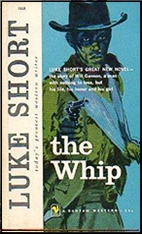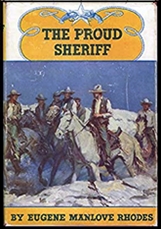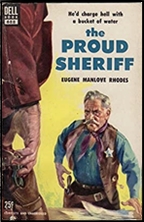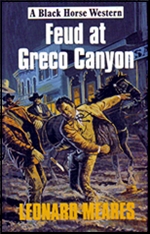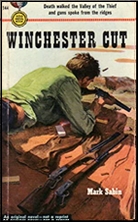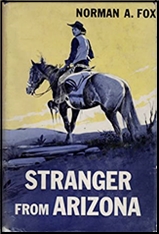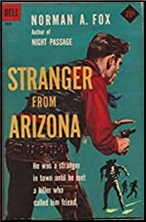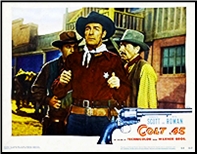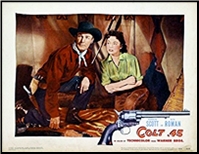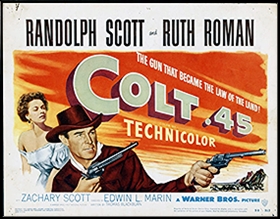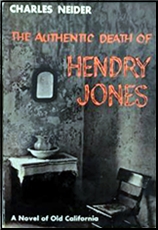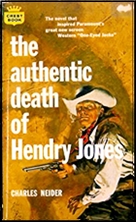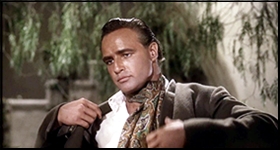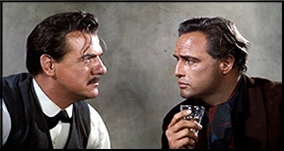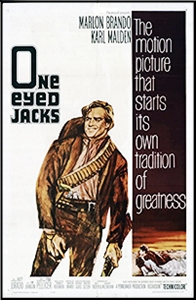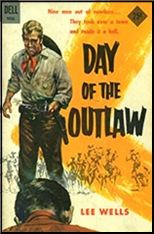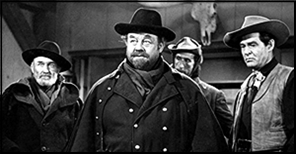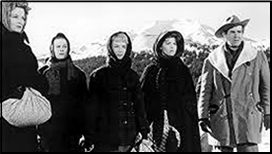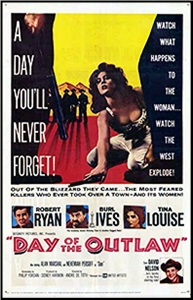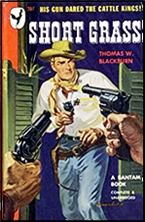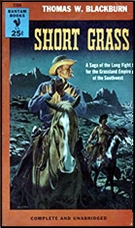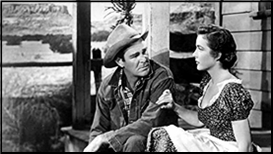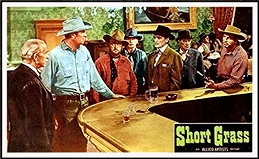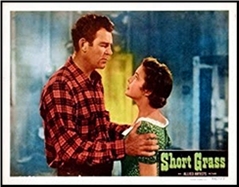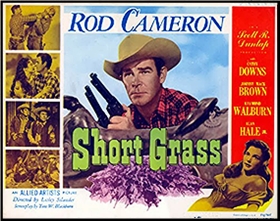Sat 19 Mar 2022
A Western Review by Tony Baer: CLIFTON ADAMS – The Desperado / A Noose for the Desperado.
Posted by Steve under Reviews , Western Fiction[7] Comments
CLIFTON ADAMS – The Desperado / A Noose for the Desperado. Stark House Press, trade paperback, 2017. // The Desperado. Gold Medal #121, paperback original, 1950. // Noose for the Desperado. Gold Medal #683, paperback original, 1957.
First heard about this via George Tuttle’s defunct website defining noir and suggesting some titles:

He says there: “The Desperado by Clifton Adams … though a Western, this novel is a landmark of early Gold Medal noir. Set in Texas during Reconstruction, the story traces the subtle transformation of Talbert Cameron from battler of injustice to outlaw.â€
Never before having thought of westerns as part of the noirboiled genre, this way eyeopening and provided this bibliomaniac with a whole new reading source to plunder.
Though westerns seem like they are 1800’s rather than 1940’s, the genre started around the same time as noirboiled crime, involved many of the same writers, and contains many of the same themes and styles as the Hammett’s and Chandler’s whose bibliographies I’d exhausted.
The lone gunman, the town harlot, and the marshall of the western are fairly transposable to the hardboiled detective, Jim Thompson psycho, and the femme fatale. The town always corrupt.
The Stark House edition I read has the following Donald Westlake quote on its cover:
“A compact, understated, almost reluctant treatment of violence, first introduced me to the notion of the character adapting to his forced separation from normal society.†Sounds like the Desperado’s the Parker template.
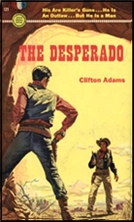
Onto the books themselves (in a recent read (Blue of Noon) a female character says: “Get to the point. I never listen to prefaces.â€).
Talbert (“Tallâ€) Cameron is around 18 years old, with a temper, in small town Texas during reconstruction. His folks have a little homestead, raise cattle and horses. It’s all real homey.
But then Talbert punches a carpetbagging cop who insults the local ladies, and he’s due to do time on the work gang.
He ain’t going.
He takes off, and when the cops beat his dad to death when his dad refuses to squawk of Tall’s whereabouts, all bets are off.
Tall comes back, exacts his revenge, and from there on out he’s a desperado.
It’s well written. It’s hard. It’s dark. It’s boiled.
The Desperado is quite good. Quite archetypal. Innocence lost. Young love. Honor. Revenge. Betrayal.
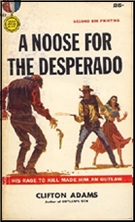
And like the typical hard-boiled detective, he’s got an ethos. He doesn’t steal. He only kills in self-defense.
And then comes the sequel: A Noose for the Desperado.
First of all: Spoiler alert: No Noose. Not even the suggestion of a noose.
He takes over a western version of Poisonville for no apparent reason than greed.
Now, for some unexplained reason, the Desperado has lost his morals. Or at least traded them for ambivalence.
He’s like Yogi Berra’s old saying that if you see a fork in the road, take it.
He steals. And then he decides that money doesn’t matter. He uses people. And then he looks after them. And then he doesn’t.
One of the main Aristotelian virtues is constancy. It’s a virtue all the great heroes have.
The Desperado has it in the first novel and loses it in second.
While he escapes the noose, we do not.
